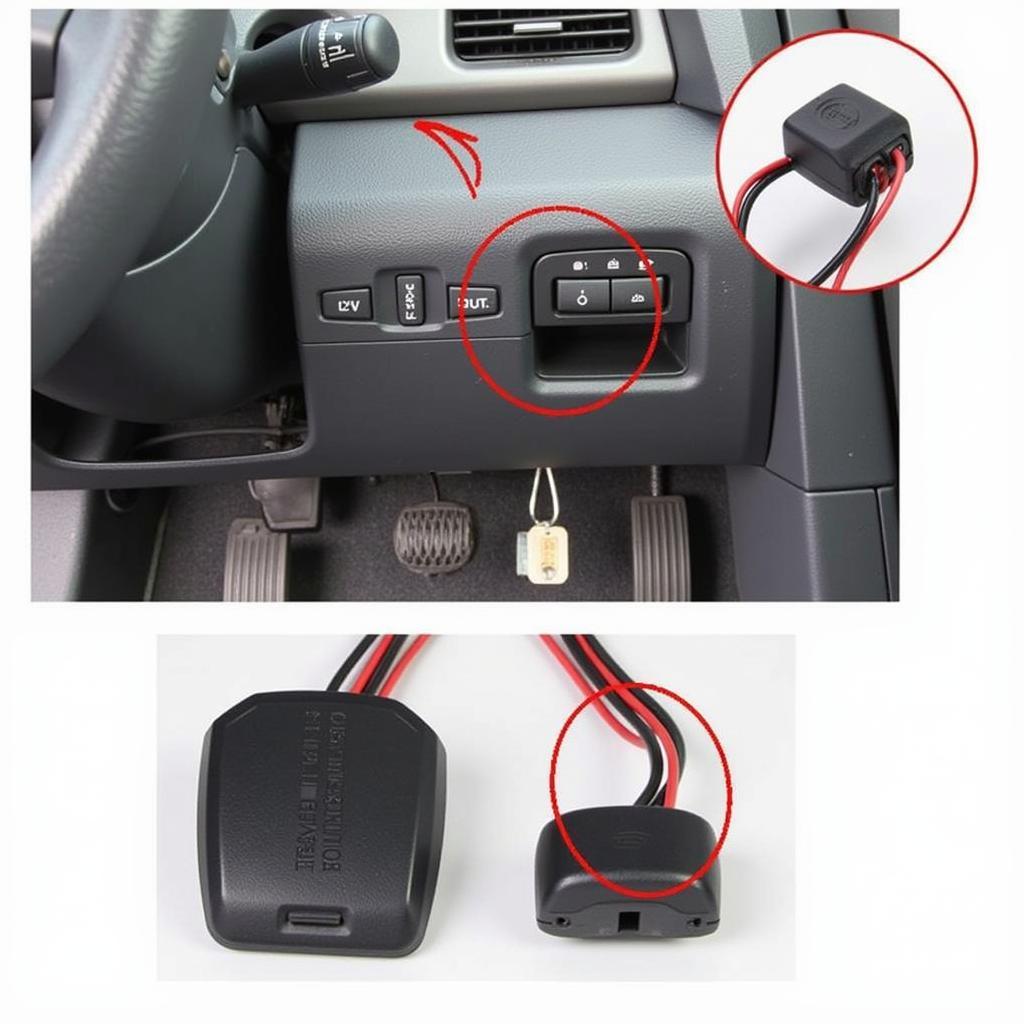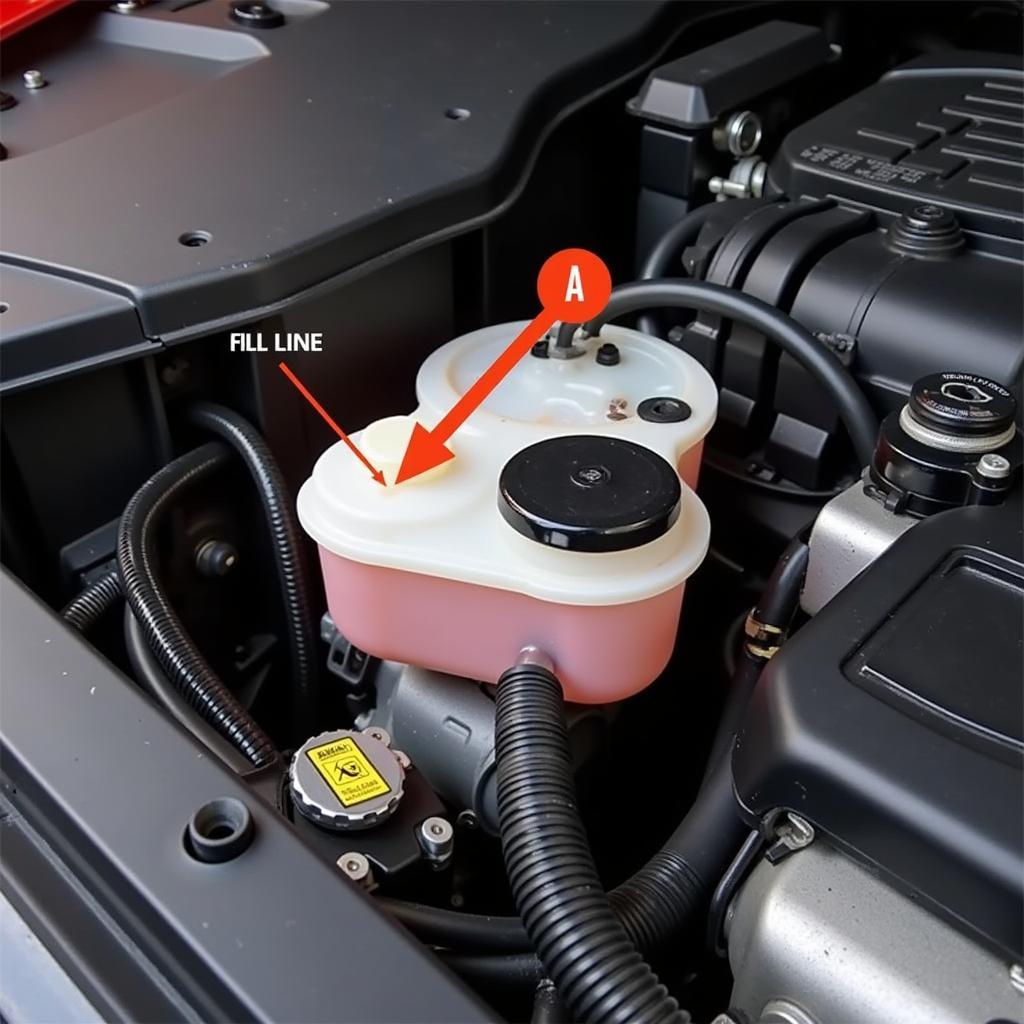A brake light bulb failure warning on your dashboard means one or more of your brake lights aren’t working. This is a serious safety issue, as your brake lights are crucial for signaling to other drivers that you’re slowing down or stopping. Ignoring this warning puts you and other road users at risk. This guide will walk you through the common causes of brake light failures, how to diagnose the problem, and the steps to get you back on the road safely.
Why is My Brake Light Bulb Failure Warning On?
While a blown bulb is the most common culprit, several other issues can trigger a brake light bulb failure warning:
- Blown Fuse: Your brake lights operate on a dedicated fuse. If this fuse blows, it can disable your brake lights entirely.
- Faulty Brake Light Switch: Located behind your brake pedal, this switch signals the lights to illuminate when you press the brakes. A malfunctioning switch can lead to intermittent or complete brake light failure.
- Wiring Problems: Damaged, corroded, or loose wiring in the brake light circuit can interrupt the flow of electricity, causing your lights to malfunction.
- Bulb Socket Issues: Corrosion or damage to the bulb socket can prevent the bulb from making a proper connection, leading to a failure.
- Water Damage: Exposure to water, especially in the rear light assembly, can cause electrical shorts and component damage, affecting your brake lights.
Diagnosing the Brake Light Bulb Failure Warning
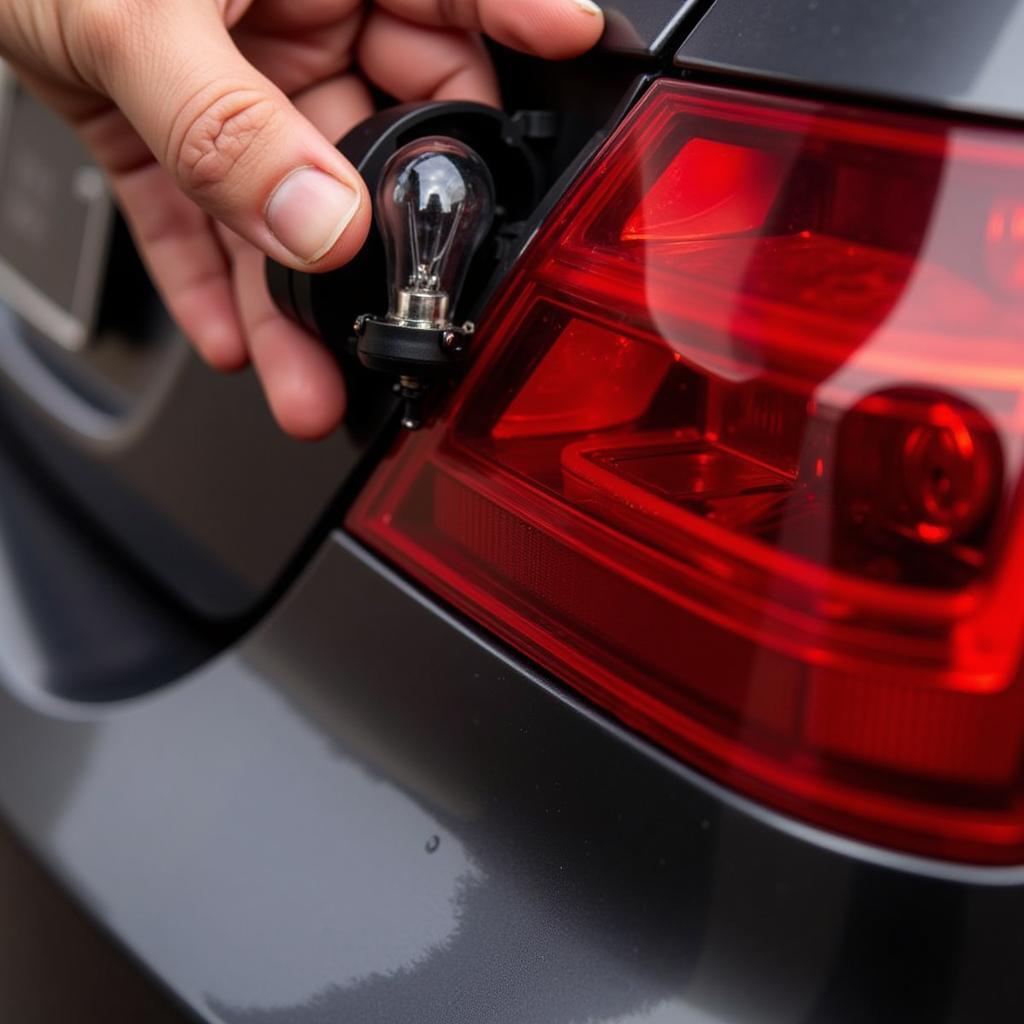 Checking Brake Light Bulb
Checking Brake Light Bulb
Before you start troubleshooting, gather the necessary tools:
- Replacement brake light bulbs: Check your owner’s manual for the correct type.
- Protective gloves and eyewear
- Screwdriver (type depends on your car model)
- Multimeter (optional)
- Owner’s manual
Here’s a step-by-step approach to diagnose the problem:
- Check the Bulbs: This is the most likely culprit. Inspect all brake light bulbs for signs of burning out or damage. If a filament is broken, the bulb needs replacing.
- Inspect the Fuse: Locate your car’s fuse box (refer to your owner’s manual). Find the fuse for the brake lights and check if it’s blown. A blown fuse will have a broken wire inside.
- Test the Brake Light Switch: This requires some mechanical aptitude. Locate the switch above the brake pedal. With the engine off, press and release the brake pedal while listening for a clicking sound from the switch. If you don’t hear a click, the switch may be faulty. A multimeter can be used to test the switch’s continuity.
- Examine the Wiring: Carefully inspect the wiring harness leading to the brake lights for any signs of damage, fraying, or loose connections. Repair or replace any damaged sections.
Fixing the Brake Light Failure
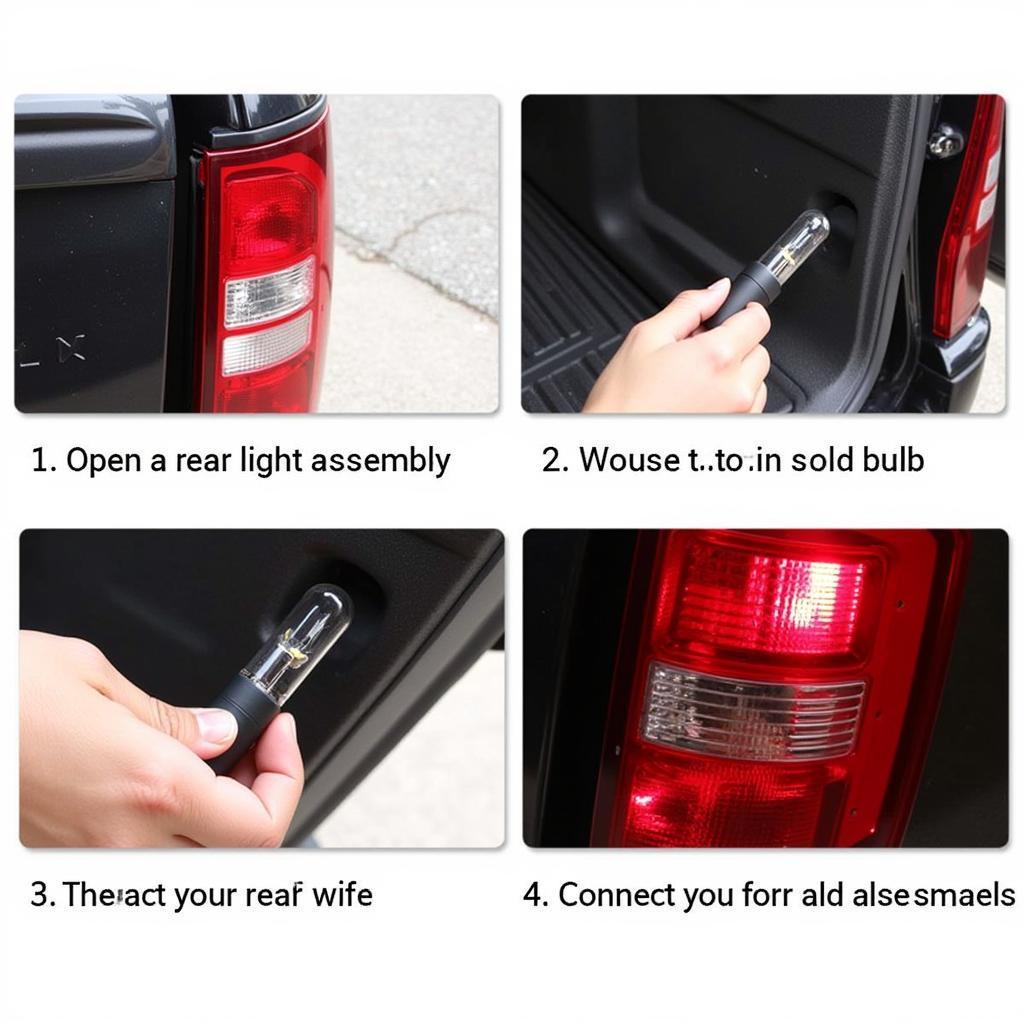 Replacing a Brake Light Bulb
Replacing a Brake Light Bulb
The solution depends on the problem you’ve identified:
- Blown Bulb: Replace the blown bulb with a new one of the correct type.
- Blown Fuse: Replace the blown fuse with a new one of the same amperage.
- Faulty Brake Light Switch: This usually requires replacement. Consult your owner’s manual or a mechanic for instructions.
- Wiring Issues: Repair or replace any damaged or loose wiring.
If you’re not comfortable performing these repairs yourself, it’s best to take your car to a qualified mechanic.
Expert Insight
“It’s easy to overlook brake light maintenance,” says John Smith, a certified automotive electrician with over 20 years of experience. “But it’s one of the most important safety features of your car. Regular checks and timely replacements can prevent accidents and keep you visible on the road.”
Preventing Future Brake Light Issues
Follow these tips to avoid brake light problems in the future:
- Regularly Inspect Your Lights: Make it a habit to check all your lights, including brake lights, at least once a month.
- Replace Bulbs Promptly: Don’t delay replacing a blown brake light bulb.
- Protect Your Wiring: Be mindful of where you park to avoid exposing your car’s undercarriage to potential water damage or debris that can damage wiring.
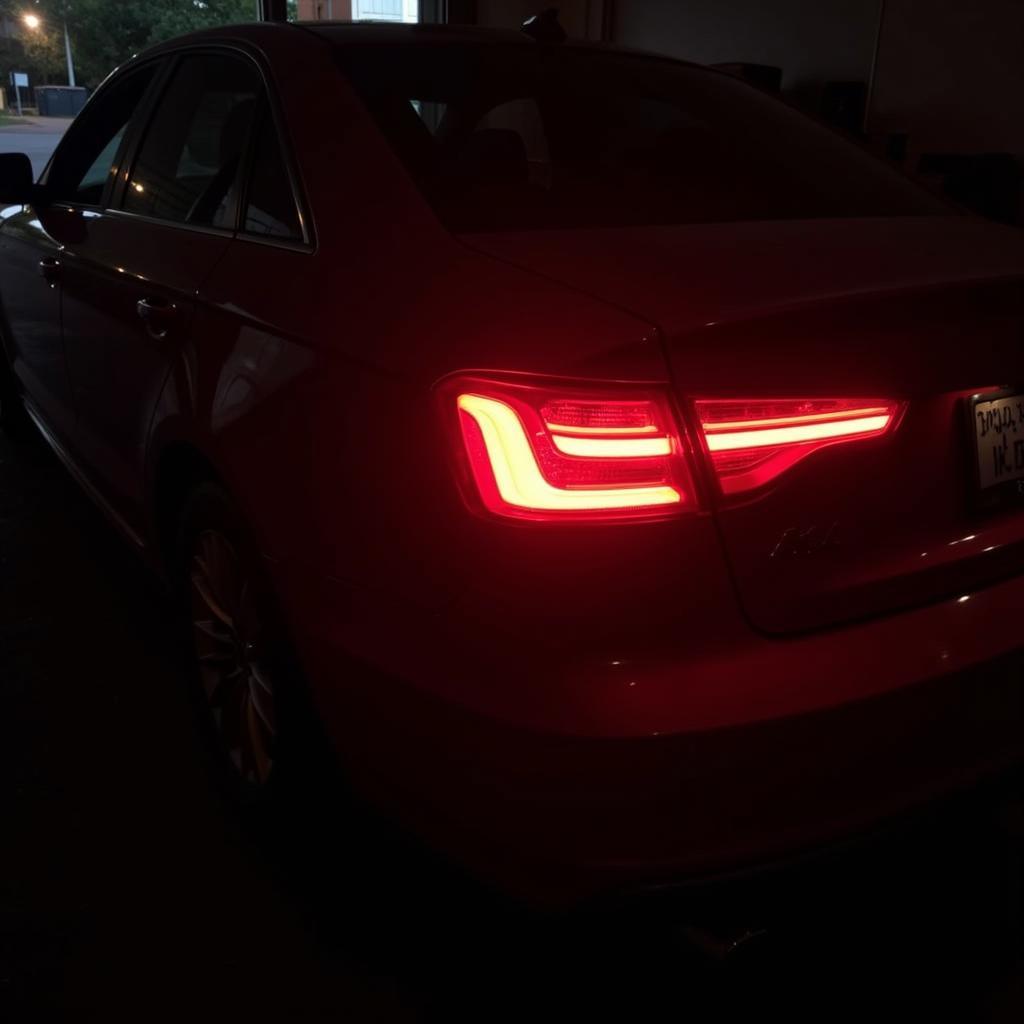 Car with Working Brake Lights
Car with Working Brake Lights
Conclusion
A brake light bulb failure warning is a serious matter that shouldn’t be ignored. By understanding the common causes, you can diagnose and address the problem effectively. Regular maintenance and prompt repairs ensure your safety and the safety of others on the road. If you’re unsure about any aspect of brake light repair, don’t hesitate to seek assistance from a qualified mechanic.

